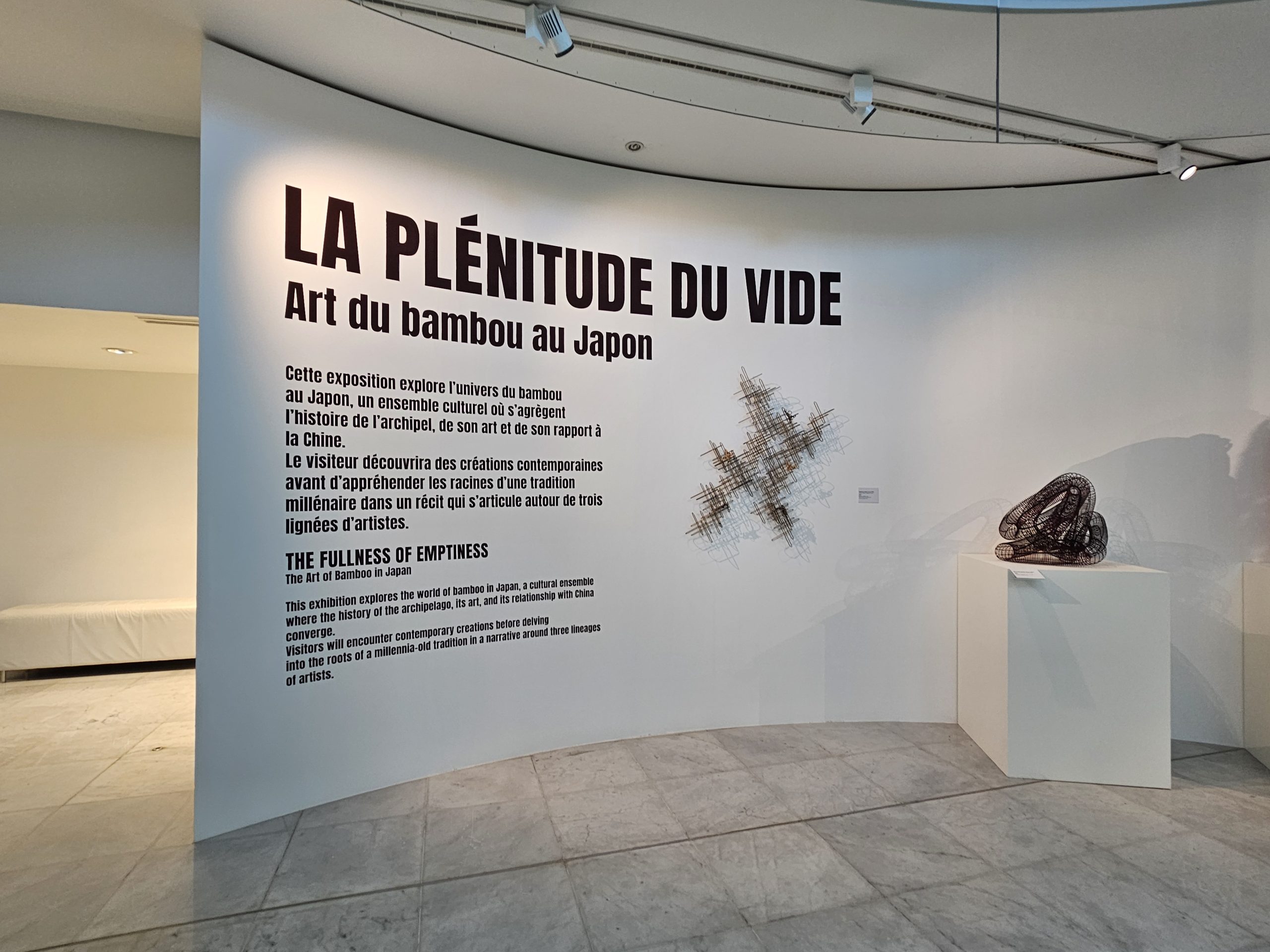The Musée des Arts Asiatiques in Nice offers a fascinating dive into the subtle art of Japanese basketry through its exhibition titled “The Fullness of Emptiness“. Until January 2025, this exceptional exhibition invites visitors to explore an ancient and delicate craftsmanship, rooted in Japanese tradition, yet imbued with modernity.
A millennia-old craft revisited. The exhibition highlights an ancient art practiced in Japan for over 2,000 years: bamboo basketry. This expertise, once used to create utilitarian objects for ceremonies, has evolved over the centuries to become an art form in its own right.
Adrien Bossard, the museum’s administrator, explains that this craftsmanship underwent a notable transformation after the Second World War. “It was in the 1960s that Japanese basketry truly took off as an art form. Some artists began creating standalone sculptures, detached from their utilitarian function, to express ideas and emotions,” he notes.
A unique collection, witness to a tradition in peril
The exhibition presents works ranging from the 18th century to the present day. It showcases creations from the great lineages of Japanese basket makers, some of which have vanished. Adrien Bossard highlights the rarity of the pieces on display: “We are fortunate to exhibit very old works, coming from private collections. Like that of the Naej collection in Germany. These pieces are precious and fragile, witnesses of a craftsmanship that has almost disappeared. “
Indeed, the Musée des Arts Asiatiques in Nice is one of the few museums in the world to have exhibited bamboo basketry. Much like the Museum of Modern Art (MoMA) in New York, which did so before it.
The Aesthetic of Emptiness: a profoundly Japanese concept
The title of the exhibition, “The Fullness of Emptiness“, indeed evokes a central philosophy in Japanese art. “Bamboo, the main material of these works, grows around the emptiness. In the creations, there is always a subtle interplay between the full and the empty. A concept that resonates deeply in Eastern culture, confides Adrien Bossard. The museum, designed by a Japanese architect, also reflects this philosophy. With its geometry centered around an empty space at the heart of the monumental staircase, it is a perfect setting for this exhibition. “
The warm reception from the public
Since its opening, the exhibition has captivated visitors, both young and old. “Visitors are often moved by what they see, and it’s not uncommon for them to remain silent, absorbed by the beauty and complexity of the works,” shares Adrien Bossard. The aim of this exhibition is also to surprise and deconstruct preconceived notions about Asia, by highlighting lesser-known aspects of its culture. “
The exhibition “The Fullness of Emptiness” is thus much more than a mere presentation of art objects. It is an invitation to an introspective journey at the heart of Japanese tradition and philosophy.
Do not miss this unique opportunity to discover a delicate and profound art, in perfect harmony with the aesthetic and spiritual concepts of Asia. You have until January 5, 2025 to enjoy this subtle art.
The Musée des Arts Asiatiques is open every day except Tuesday, from 10 AM to 5 PM. Closing time is 6 PM for the month of August.


